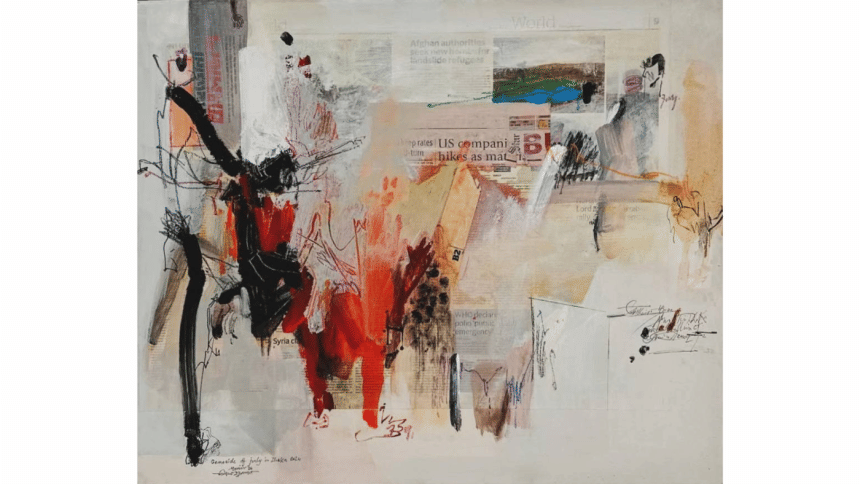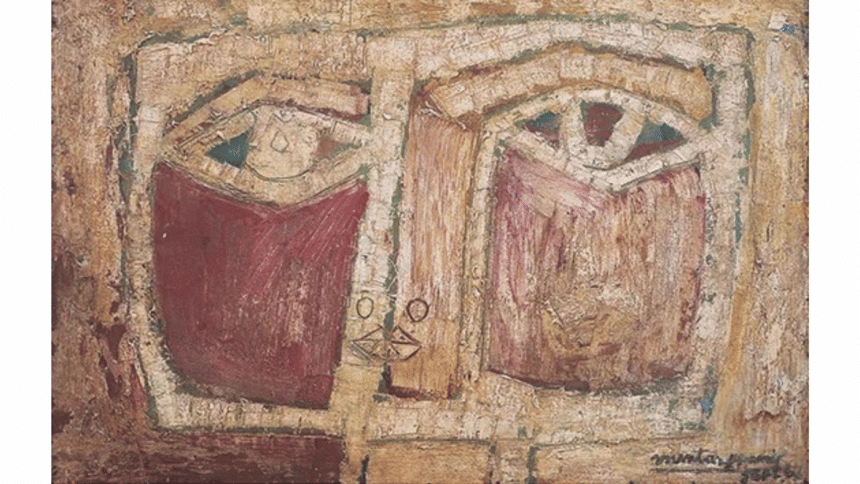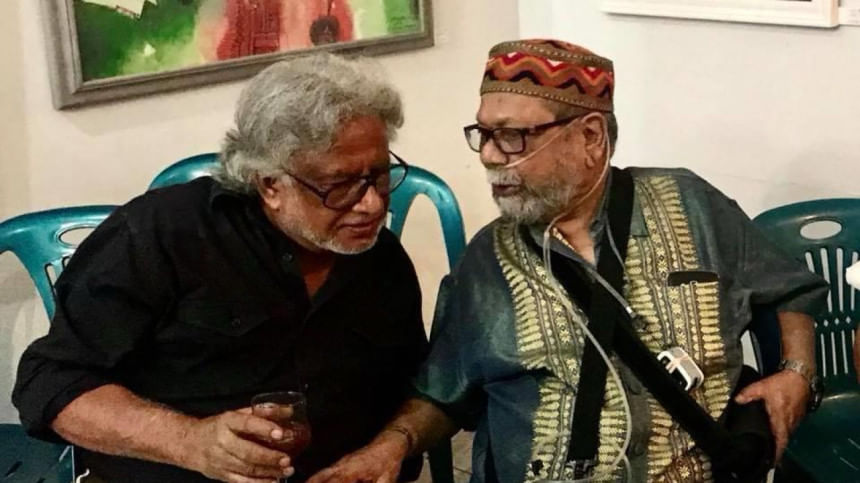Parallel journeys, lasting legacy: In honour of Murtaja Baseer and Monirul Islam

On August 17, the Bangladeshi art world pauses in reverence to celebrate and reflect upon the birthdays of two towering figures of our modern art history—Monirul Islam, who turns 82 today, and the late Murtaja Baseer, who would have been 93. Albeit belonging to different generations, both artists carried the flag of Bangladeshi modernism beyond our borders, inscribing their names on the international stage while remaining deeply rooted in their homeland.
Monirul Islam: Poet of Lines and Light
Born in 1943, Monirul Islam has carved a distinct place in contemporary art through his lyrical use of line, space, and colour. A graduate of what is now the Faculty of Fine Arts, University of Dhaka, he left for Madrid in the 1960s on a scholarship, where he immersed himself in European modernism and printmaking. Over time, he developed what critics now call the "Monirul Islam Style"—a language of layered textures, delicate lines, and poetic abstraction that bridges East and West.

His works exude a spiritual calm, evoking rivers, landscapes, and subtle memories of Bengal while dialoguing with international avant-garde traditions. Decorated with Spain's highest civilian honour, the Cross of Officer of the Order of Queen Isabella, Monir continues to inspire generations with his relentless experimentation, teaching, and generosity as a mentor. His works have been exhibited across Europe, Asia, and the Americas, cementing his place as a pioneer.
Speaking to The Daily Star in a past interview, Monir reflected, "Art, for me, is a spiritual journey—it begins with silence and grows into a rhythm of lines and colours."
Murtaja Baseer: The Renaissance Mind
Born in 1932 to the contemporary scholar and litterateur Dr Muhammad Shahidullah, a contemporary of national poet Kazi Nazrul Islam, Murtaja Baseer embodied a rare polymathic genius. He was not only a painter of remarkable versatility but also a novelist, researcher, numismatist, poet, filmmaker and art critic.

Baseer's career spanned multiple phases—from his early engagement with realism and political themes in the 1950s, through his experimentation with pure abstraction in the 1970s, to his signature series such as "The Wall", "Faces", and "Epitaphs". His works were often stark and contemplative, exploring themes of mortality, love, freedom, and identity. Internationally exhibited and deeply respected, Baseer left an indelible mark on the intellectual and artistic landscape of Bangladesh before his passing in 2020.
Parallel journeys, shared legacy

Although Monirul Islam and Murtaja Baseer never belonged to the same circle in terms of style or period, both artists symbolise Bangladesh's cultural dignity on the world stage. They remind us that art transcends generations and forms, carrying within it the power to narrate our struggles, dreams, and universal humanity.
As we celebrate Monirul Islam's 82nd birthday and commemorate Murtaja Baseer's 93rd, we honour not only their artistic genius but also their profound contributions to the shaping of Bangladesh's cultural identity. Their legacies continue to illuminate galleries, inspire young artists, and remind us of the timeless dialogue between tradition and innovation.

 For all latest news, follow The Daily Star's Google News channel.
For all latest news, follow The Daily Star's Google News channel. 









Comments